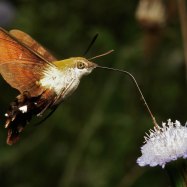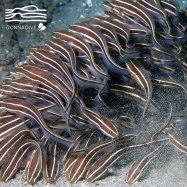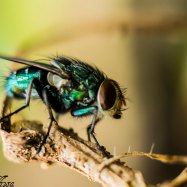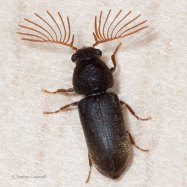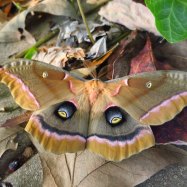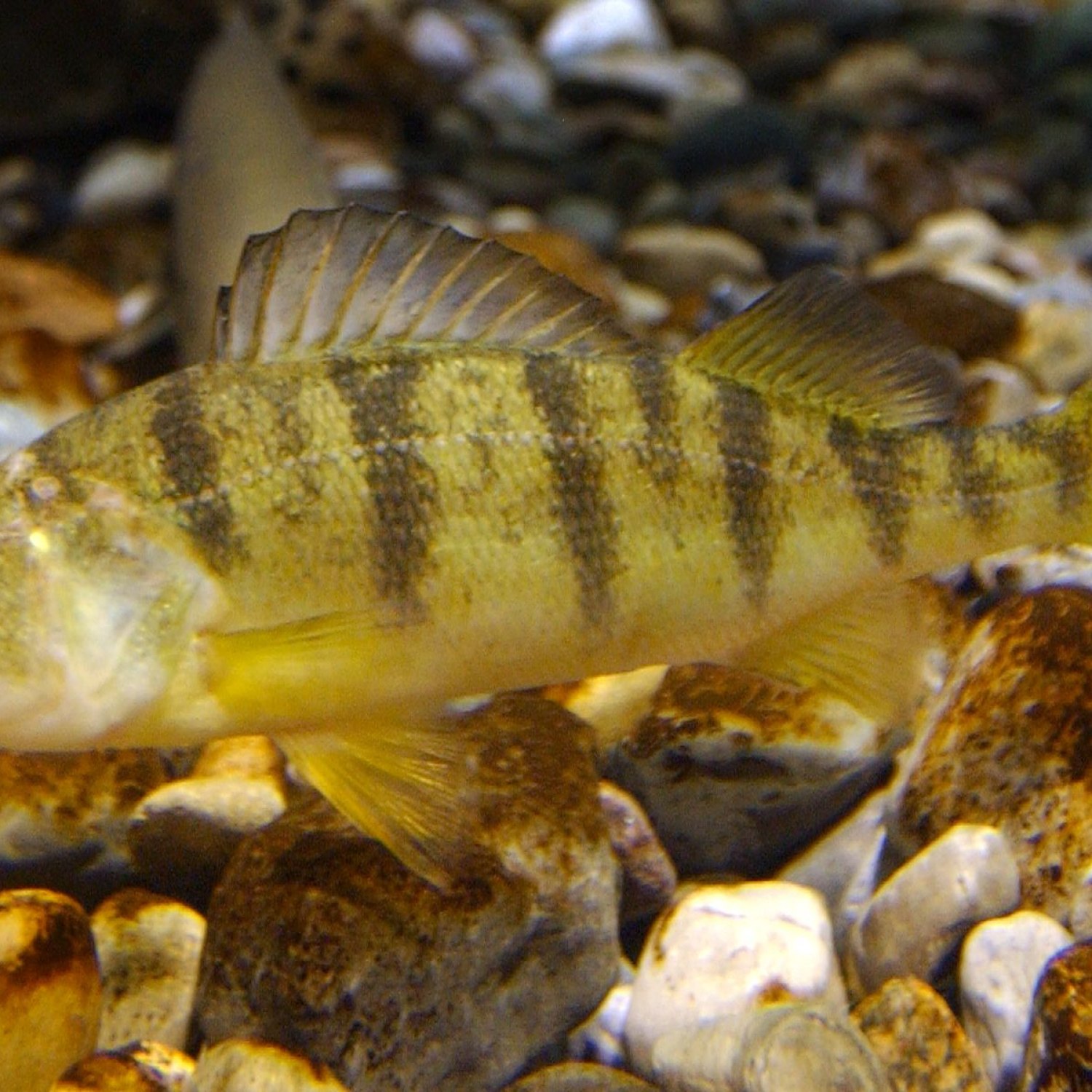
Yellow Perch
15-20 cm
Did you know the Yellow Perch, also known as Perca flavescens, can be found in Lakes, ponds, rivers, and streams? These freshwater fish have a slender and elongated body shape and can grow up to 15-20 cm in length. They belong to the Percidae family, which includes other popular fish like the Walleye and Pike. Next time you're out by the water, keep an eye out for these colorful and lively creatures! #animals #YellowPerch #Percidae #freshwaterfish #naturelovers
Animal Details Summary:
Common Name: Yellow Perch
Kingdom: Animalia
Habitat: Freshwater
The Resilient Yellow Perch: The Natural Wonder of North America
From the shimmering lakes, vibrant ponds, and flowing rivers of North America, a fish with vibrant colors and an impressive resilience thrives – the yellow perch. With scientific name Perca flavescens, this common fish, also known as the American perch, reigns as one of the most popular freshwater game fishes in the region. Its striking yellow-green color with dark vertical stripes on the sides, along with other outstanding features, make it a fascinating subject of study and admiration.The Natural Habitat of the Yellow Perch
Found abundantly in the freshwater of North America, the yellow perch belongs to the kingdom Animalia, phylum Chordata, class Actinopterygii, order Perciformes, and family Percidae Yellow Perch. With origins from the United States and Canada, this carnivorous fish typically thrives in lakes, ponds, rivers, and streams. These habitats provide the perfect environment for the yellow perch to grow and flourish, as they prefer clear, shallow waters with vegetation and plenty of plankton for food.Despite its widespread distribution, this small but mighty fish has adapted to various environmental conditions, and even human-induced changes, to maintain a stable population. It can thrive in different water temperatures, ranging from 12 to 26 degrees Celsius, and can survive extreme environmental conditions, such as low oxygen and high salinity levels.
The Unique Physical Characteristics of the Yellow Perch
The yellow perch is a sight to behold with its body shape and coloration. It measures around 15 to 20 centimeters in length, with a slender, elongated body that tapers to a pointed snout. Its body is laterally flattened, allowing it to move swiftly and precisely in the water.The most distinctive feature of the yellow perch is its coloration. Its body is bright yellow-green, with dark vertical stripes on its sides Yellow Faced Bee. This coloration serves as camouflage, making it difficult for predators to spot them in the water. Moreover, its eyes are positioned high on the head, giving the fish a better field of vision and a better chance to spot any potential danger.
The Feeding Behavior of the Yellow Perch
As mentioned earlier, the yellow perch is a carnivorous fish. It feeds mainly on plankton, insect larvae, crustaceans, and smaller fish. Its mouth is equipped with sharp teeth, which it uses to crush and chew its prey. To aid in its feeding, it has an excellent sense of smell and lateral line system, which helps it detect movements and vibrations in the water.What's unique about the yellow perch's feeding behavior is its hunting strategy. Rather than chasing its prey, it uses an ambush technique. It lies in wait, often motionless near the bottom of the water, before lunging at its unsuspecting prey. This approach has served the fish well, as it can quickly pounce on its prey without expending too much energy.
The Role of the Yellow Perch in the Ecosystem
The yellow perch is not only an essential fish for recreational fishing but also plays a vital role in its ecosystem. As a predator, it helps regulate the population of its prey, maintaining a balance in the aquatic food chain. It also serves as an essential link between zooplankton and larger predators, making it a critical component for a healthy freshwater ecosystem.Moreover, the yellow perch is an important indicator species for water quality. As a bottom-feeder, it consumes worms and other organisms living in the sediment, making it vulnerable to contaminants and pollutants. Any changes in its population or health can indicate potential issues in the water's quality, making it a crucial species to monitor.
The Threats to the Survival of the Yellow Perch
Despite its resilience, the yellow perch still faces various threats that jeopardize its survival. The most significant threat comes from human activities, such as pollution, overfishing, and habitat destruction. Pollutants like agricultural runoff and industrial waste can harm the yellow perch and its habitat, affecting its health and ability to reproduce.Additionally, overfishing can lead to the depletion of the yellow perch's population, disrupting the balance in the aquatic ecosystem. It is estimated that up to three million yellow perch are caught for commercial purposes annually in North America. While recreational fishing also catches a significant number of fish each year, regulations and catch-and-release practices have helped maintain a sustainable population.
Furthermore, the yellow perch's habitat is under threat due to human activities, such as dam construction and deforestation. These activities decrease the availability of suitable environments for the fish to thrive, leading to a decline in its population.
The Conservation Efforts for the Yellow Perch
The conservation of the yellow perch is vital to maintaining a healthy and sustainable freshwater ecosystem. To address the threats to its survival, numerous efforts have been made to protect this species and its habitat.One key strategy for conservation is the implementation of regulations for recreational and commercial fishing. This helps maintain a stable population of yellow perch, ensuring that enough fish are left in the waters to reproduce and sustain the ecosystem's balance. Additionally, creating protected areas, such as no-fishing zones, helps maintain a safe and secure habitat for the fish.
Moreover, education and awareness campaigns are critical for the conservation of the yellow perch. Public education and outreach programs help people understand the importance of this species and the effects their actions can have on the fish's survival. This also encourages responsible fishing practices, such as proper catch-and-release techniques, to prevent harm to the fish.
The Future of the Yellow Perch
Despite the threats it faces, the yellow perch's future looks bright due to the various conservation efforts in place. With proper regulations and management practices, this resilient fish will continue to thrive and play a vital role in the freshwater ecosystem of North America.As advancements in technology and science continue, there may also be a greater understanding of the yellow perch and its habitat. This knowledge can help develop better strategies for conservation and protection, further securing the fish's future.
In conclusion, the yellow perch is a natural wonder of North America, with its vibrant coloration, unique physical characteristics, and essential role in the ecosystem. As a valuable game fish, it brings joy to many recreational anglers. However, it is crucial to remember that responsible fishing practices and conservation efforts are necessary to protect this fish's population and its habitat. Let us all do our part in preserving the resilient yellow perch for generations to come.

Yellow Perch
Animal Details Yellow Perch - Scientific Name: Perca flavescens
- Category: Animals Y
- Scientific Name: Perca flavescens
- Common Name: Yellow Perch
- Kingdom: Animalia
- Phylum: Chordata
- Class: Actinopterygii
- Order: Perciformes
- Family: Percidae
- Habitat: Freshwater
- Feeding Method: Carnivorous
- Geographical Distribution: North America
- Country of Origin: United States and Canada
- Location: Lakes, ponds, rivers, and streams
- Animal Coloration: Bright yellow-green with dark vertical stripes on their sides
- Body Shape: Slender and elongated
- Length: 15-20 cm
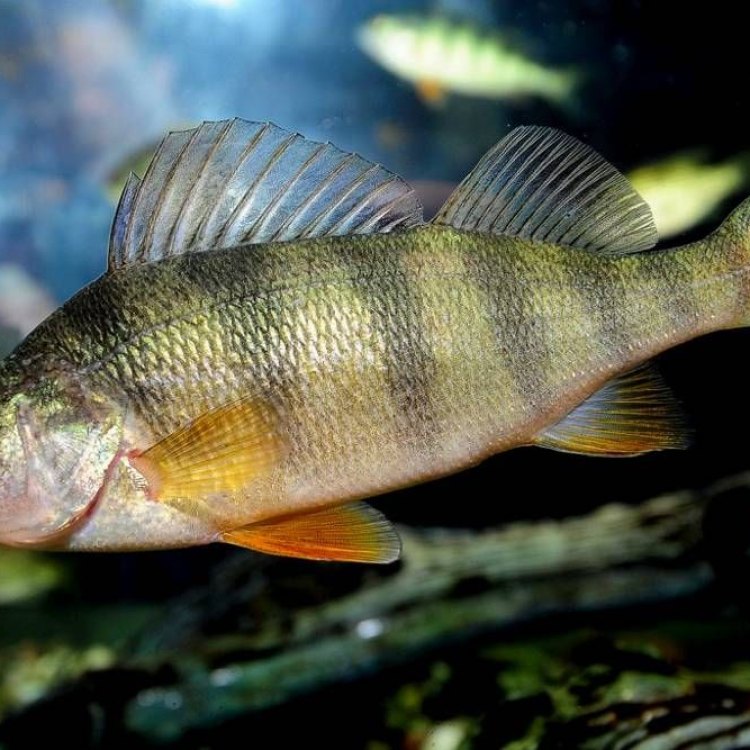
Yellow Perch
- Adult Size: 25-30 cm
- Average Lifespan: 6-10 years
- Reproduction: Sexual
- Reproductive Behavior: Spawning
- Sound or Call: No sound production
- Migration Pattern: Seasonal migration
- Social Groups: Schools
- Behavior: Active during day time
- Threats: Habitat loss, pollution, overfishing
- Conservation Status: Least Concern
- Impact on Ecosystem: Important prey species
- Human Use: Popular sport fish
- Distinctive Features: Dark vertical stripes
- Interesting Facts: Yellow perch are often used as bait for larger predatory fish.
- Predator: Larger predatory fish
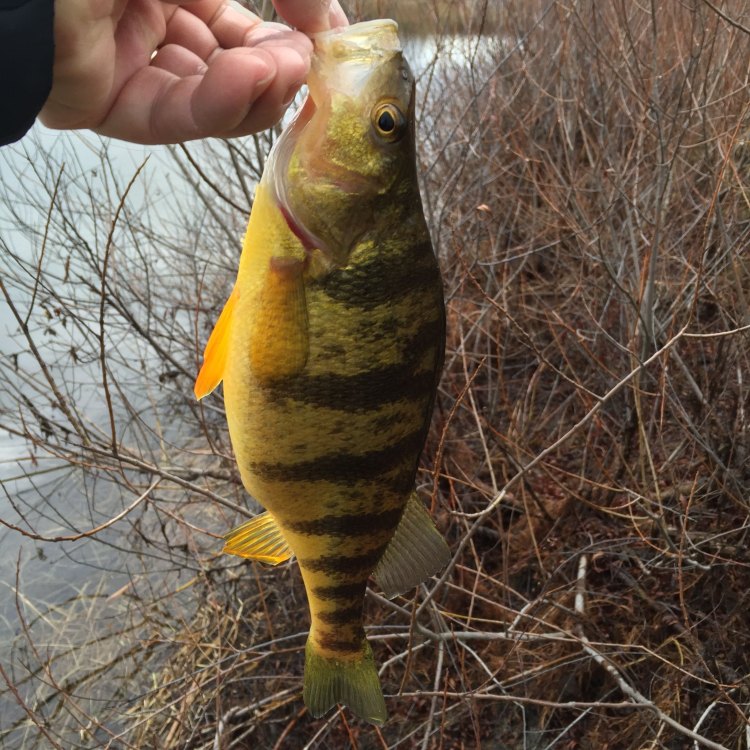
Perca flavescens
Trembling in the Water: The Fascinating Life of the Yellow Perch
In the shallow waters, below the shimmering rays of the sun, a small fish can be seen darting in and out of the weeds and rocks. With its distinctive dark vertical stripes and shimmering golden body, the yellow perch is a common sight in the lakes and rivers of North America. But what makes this fish so unique and fascinating? Let's dive deeper and explore the intriguing features and behavior of the yellow perch.Adult Size:
Measuring between 25-30 cm, the yellow perch is a relatively small fish compared to its fellow predators in the water PeaceOfAnimals.Com. Despite its size, it is a formidable hunter, using its sharp spiny rays and sharp teeth to catch prey. It mainly feeds on smaller fish, but can also consume crustaceans and insects.
Average Lifespan:
Although not the longest-living fish, with an average lifespan of 6-10 years, the yellow perch still has plenty of time to make its mark in the aquatic world. During this time, it can grow to its maximum size and reproduce, contributing to the population of its species.
Reproduction:
The yellow perch reproduces sexually, where males and females release eggs and sperm into the water during the spawning season. This usually occurs in early spring when the water temperature reaches a certain level. The females can produce thousands of eggs, which are then fertilized by the males. After this process, the eggs are left to develop on their own, without any parental care.
Reproductive Behavior:
Spawning is a critical time for yellow perch, as it is a time for them to find a suitable mate and ensure successful reproduction Yellow Bullhead Catfish. During this period, the fish exhibit specific behaviors, such as increased activity and aggression. Males may also show off their bright colors and display territorial behavior to attract females.
Sound or Call:
Unlike some species of fish that use sound to communicate or attract a mate, the yellow perch does not produce any sound. It relies on visual cues and body language to communicate with other fish.
Migration Pattern:
The yellow perch is known to exhibit seasonal migration patterns, moving towards shallow waters in the spring for spawning, and then moving back to deeper waters as the water temperature drops in the fall. This behavior helps them find suitable spawning grounds and food sources throughout the year.
Social Groups:
Yellow perch are social creatures, often seen in large schools ranging from a few dozen to hundreds of individuals. These schools can offer protection against predators and make it easier for them to find food. Interestingly, yellow perch schools also have a hierarchy, with larger and more dominant fish taking the lead.
Behavior:
Active during the day, the yellow perch spends most of its time hunting and avoiding predators. It is a rapid and agile swimmer, able to maneuver through tight spaces to catch its prey. As a cold-blooded animal, it is also known to change its behavior and slow down in colder temperatures, conserving energy for survival.
Threats:
As with many aquatic species, yellow perch is vulnerable to human activities and environmental factors. Habitat loss due to urban development, pollution from human activities, and overfishing are some of the major threats to this species. These factors not only directly affect the yellow perch but can also disrupt the entire ecosystem it is a part of.
Conservation Status:
Despite these threats, the yellow perch is currently classified as "least concern" on the IUCN Red List. This is due to its widespread distribution and stable population in many areas. However, continued monitoring and conservation efforts are necessary to ensure its survival in the long run.
Impact on Ecosystem:
The yellow perch may be small, but its impact on the ecosystem is significant. As an important prey species, it contributes to the food chain, providing a food source for larger predatory fish. Its presence also helps regulate the population of smaller prey species, maintaining a balance in the ecosystem.
Human Use:
The yellow perch is a popular sport fish, with anglers seeking it for its challenge and tasty flesh. Its small size and large population make it easily accessible and a favorite among recreational fishermen. It is also often used as bait for larger predatory fish, as it is an abundant and attractive food source.
Distinctive Features:
One of the most distinctive features of the yellow perch is its dark vertical stripes against its golden body. These stripes serve as camouflage, helping the fish blend in with its surroundings and avoid predators. Another unique feature is its sharp spiny rays, which can cause significant damage to predators or humans if handled improperly.
Interesting Facts:
Apart from its use as a sport fish and bait, yellow perch have other interesting uses as well. Their scales have been used to make jewelry, and their meat is often sold in grocery stores and markets. They are also researched by scientists to understand their behavior and contribution to the ecosystem better,
Predator:
Despite being a predator itself, the yellow perch also has larger predators to watch out for. Larger fish, such as bass, pike, and walleye, prey on the yellow perch, making it essential for the perch to have fast reflexes and excellent camouflage to survive.
The yellow perch may seem like a small and inconspicuous fish, but delve deeper into its world, and you will find a fascinating and captivating creature. From its unique features and behaviors to its importance in the ecosystem, the yellow perch is a valuable member of the aquatic world. But like any living being, it is also facing threats and requires our attention and protection to ensure its longevity. Let us continue to admire and learn from the trembling fish in the water, as it continues to play its crucial role in our world.
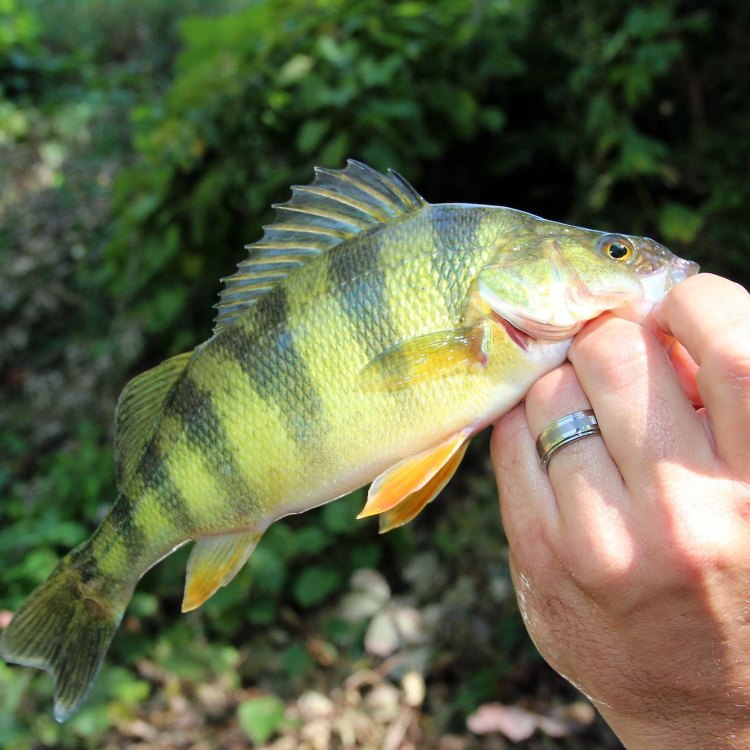
The Resilient Yellow Perch: The Natural Wonder of North America
Disclaimer: The content provided is for informational purposes only. We cannot guarantee the accuracy of the information on this page 100%. All information provided here may change without prior notice.


